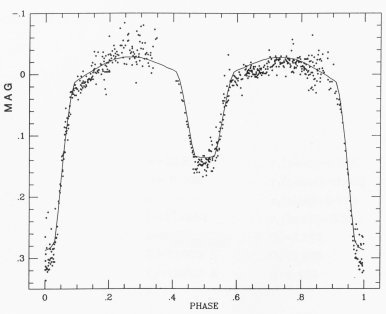
 |
The light curve of VV Orionis begins with the deeper minimum of the secondary eclipse (at far left, Phase 0). The minimum of the secondary eclipse is in the middle (Phase 0.5); the curve again plunges at the primary eclipse at far right. Tidal effects that distort the stars from spherical shapes, and refelction effects, cause curve to be continuously variable even out of eclipse. (From an article by C. R. Chambliss and B. M. Davan in the Astronomical Journal, vol. 93, p. 950, 1987.) |